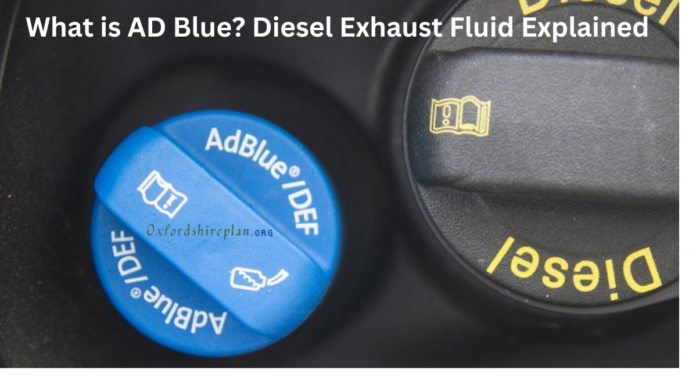AdBlue is a key player in keeping diesel engines clean and reducing harmful emissions. But what exactly is it, and why is it so important for modern diesel engines? This article explains everything you need to know about Ad Blue, how it works, and why it is essential for reducing pollution.
Contents
- What is AdBlue?
- How Does AdBlue Work?
- Why is AdBlue Important?
- Who Needs to Use AdBlue?
- Maintenance and Refilling AdBlue
- FAQs
- How often do I need to refill my AdBlue tank?
- Can I mix AdBlue with other fluids?
- What happens if I run out of AdBlue?
- Is AdBlue harmful to the environment?
- Can I refill AdBlue myself?
- Conclusion
What is AdBlue?
AdBlue is a liquid solution used in diesel engines to reduce harmful nitrogen oxide (NOx) emissions. It is made from a mixture of urea and deionized water, typically comprising 32.5% urea and 67.5% water.
This clear, non-toxic fluid is stored in a separate tank in diesel vehicles and is automatically injected into the exhaust gases before they leave the exhaust system.
How Does AdBlue Work?
The process is straightforward but crucial for cutting down emissions. When Ad Blue is injected into the hot exhaust gases, it triggers a chemical reaction in the catalytic converter.
This reaction converts nitrogen oxide, a major air pollutant, into nitrogen and water vapor, two harmless substances that are then emitted from the vehicle.
Why is AdBlue Important?
- AdBlue plays a significant role in reducing the environmental impact of diesel engines. By converting dangerous NOx into harmless nitrogen and water vapor, it helps in significantly lowering the amount of pollution a vehicle emits.
- Many countries have strict regulations regarding vehicle emissions. AdBlue helps vehicles meet these stringent standards, avoiding heavy fines and penalties for non-compliance.
- Vehicles equipped with AdBlue technology often show improved fuel efficiency because the system helps optimize the engine’s performance.
Who Needs to Use AdBlue?
AdBlue is required in diesel-powered vehicles that are equipped with selective catalytic reduction (SCR) technology. This includes many modern buses, trucks, and other heavy vehicles. it is increasingly common in passenger vehicles as well, particularly those designed to meet Euro 6 emissions standards.
Maintenance and Refilling AdBlue
Refilling AdBlue is a simple process:
- Check the dashboard: Most vehicles will alert you when the Ad Blue tank needs refilling.
- Refill as needed: AdBlue can be purchased at most service stations and is easy to refill. Just pour it into the designated tank next to the fuel filler.
it is important to handle AdBlue with care because although it is non-toxic, it can corrode certain materials and leave residues.
FAQs
How often do I need to refill my AdBlue tank?
AdBlue needs to be refilled every 12,000 to 15,000 miles, but this can vary based on vehicle type and driving habits.
Can I mix AdBlue with other fluids?
No, AdBlue should never be mixed with other fluids. It should be stored and handled separately to avoid contamination.
What happens if I run out of AdBlue?
If a vehicle runs out of Ad Blue, it won’t stop immediately, but it might go into a reduced performance mode to limit emissions until the tank is refilled.
Is AdBlue harmful to the environment?
AdBlue is environmentally friendly. it is designed to reduce pollution and is non-toxic.
Can I refill AdBlue myself?
Yes, you can refill AdBlue yourself using containers available at most automotive stores or service stations.
Conclusion
AdBlue is a vital component for modern diesel engines, playing an essential role in reducing emissions and helping vehicles meet environmental standards. Its simple yet effective mechanism not only aids in maintaining air quality but also supports the overall performance of your vehicle.
Read More:
- Joey Essex Finally Speaks Out as Ex Grace Explodes at Luca on Love Island All Stars
- What Is a Movie Grid and How Does It Work?
- Why Did Sharona Leave Monk?
- How to Apply For the EU Settlement Scheme?
- UC Universal Credit United Kingdom Log In – Check Now

I am a dedicated lifestyle and fashion enthusiast, always looking for the latest trends and timeless styles. With a flair for creativity and a passion for self-expression, I provide fresh insights and tips on elevating everyday living and personal style.
















